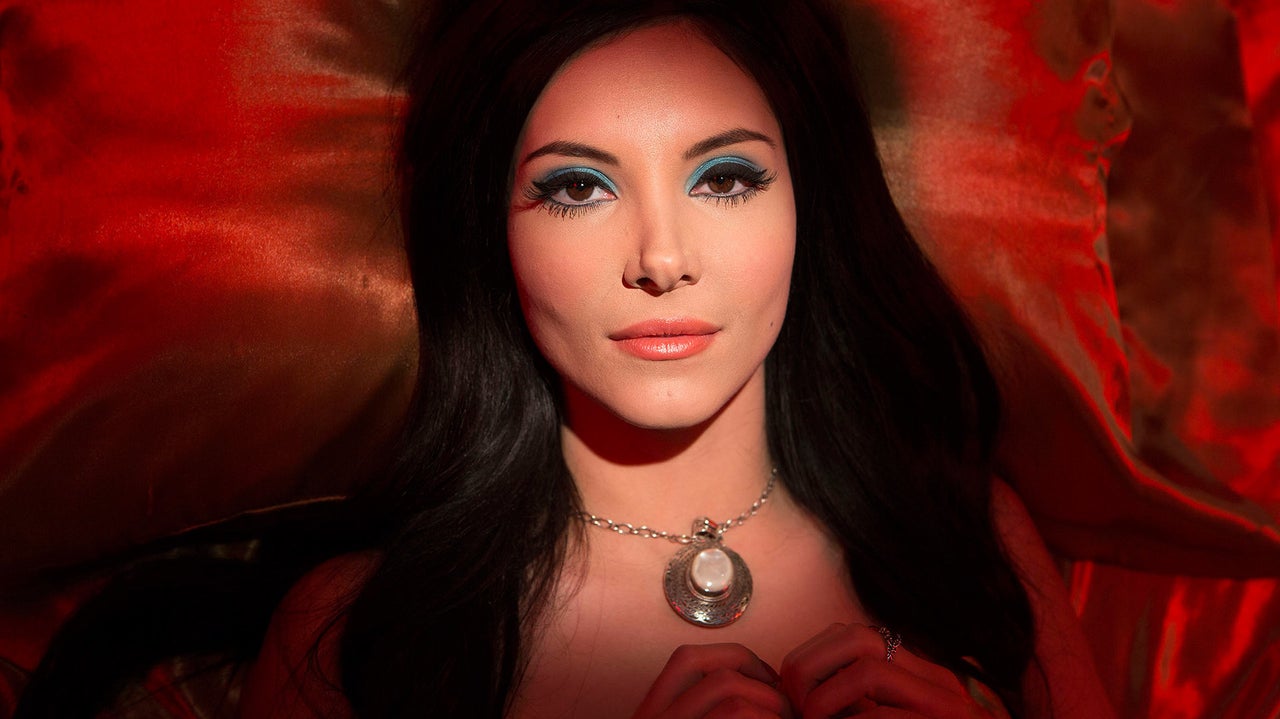Elaine, the protagonist of Anna Biller’s fairy-tale horror film, “The Love Witch,” is herself a witch. She reads Tarot, brews spells, seduces men, and yes, sometimes kills them. But for writer and director Biller, these occult pastimes are secondary to the simple fact that Elaine is a woman.
“Growing up, especially when I became a teenager, I felt there was something witchy about women,” Biller explained in an interview with The Huffington Post. “When girls become women, there is this hysteria around them, this mistrust. You feel magical and dirty and icky and goddess-like and all these weird things that people are projecting on you.”
Biller recalls feeling somewhat witch-like from a young age, in that she was creative, something of a loner, and sometimes, she claims, strangely clairvoyant. But as she matured into adulthood, the main qualities Biller associated with witchiness were even more universal: the fears and fantasies bound up in men’s conceptions of women.
“There are two versions of the witch,” Biller explained. “The old, ugly hag and the young, beautiful temptress. They’ve both been around since early Greek mythology, when Circe enchanted men and turned them into pigs. They all stem from male fears and fantasies about women. Men want the woman but they’re also afraid of her. That’s the reality for women. They’re made to feel like they’re weird and creepy and insane, especially if they are sexual.”
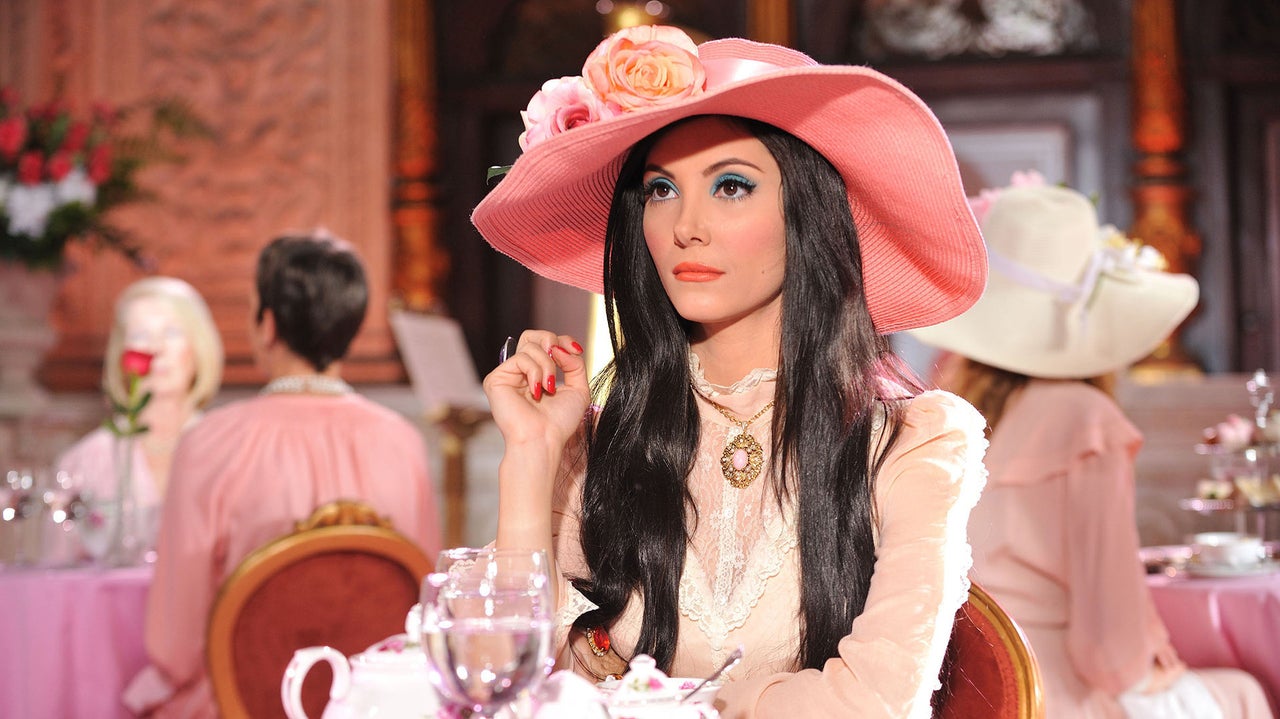
Of the two archetypal witches ― ugly hag and beautiful temptress ― movie character Elaine definitely qualifies as the latter. “The Love Witch” begins with the raven-haired sorceress, played by Samantha Robinson, cruising up the Northern California coast in a vintage convertible, just after being dumped by her ex-husband Jerry (who died shortly after said dumping). Elaine is gorgeous and glamorous, impeccably made up as a 1960s femme fatale, despite living in present day.
Elaine leaves her old, married life in San Francisco behind ― both because of the breakup and also to flee any impending murder charges ― heading to a small town among the NorCal Redwood trees, rife with occult, orgiastic rituals and all kinds of good, Wiccan fun. Following the unfortunate demise of her relationship (and husband), Elaine is convinced she’s finally figured out the secret to finding true love: giving men whatever they want, or at least giving them that impression.
Elaine is an actress, an artist, a witch, a woman. She has mastered the craft of seducing men through constructing a false self that enchants and pleases beyond their wildest desires. When wooing a bohemian college professor, for example, she slips hallucinogens into his drink and proceeds to strip while wearing rainbow lingerie.
Biller understands Elaine as a stand-in for all women who give up pieces of themselves to satiate the desires of men. “For women, you will be more powerful if you play by the rules, the way Elaine does,” she explained. “But there is a terrible price to pay. I’ve known girls and women who have gone insane trying to be too much of a man’s fantasy. Elaine is strong until she isn’t. She goes past being a goddess and into place of mental illness.”
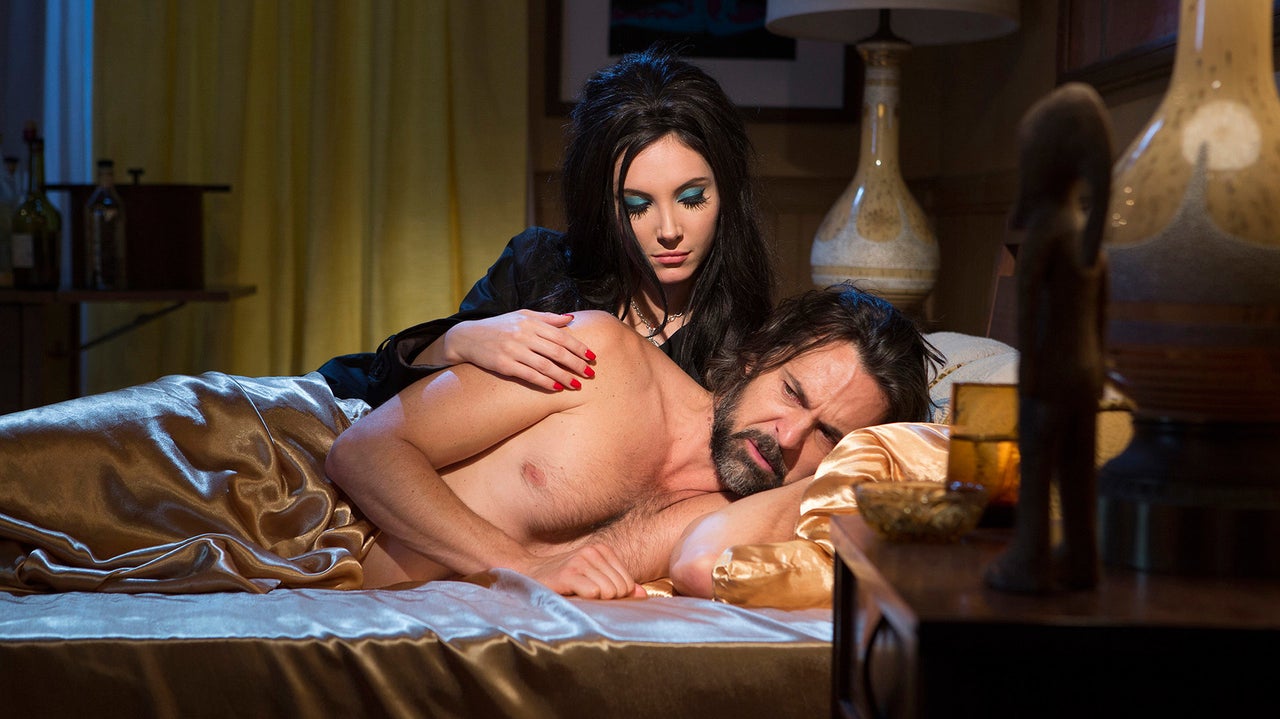
What happens to women who go mad trying to please men? Biller calls it “pathological narcissism,” a state of irreparable fragmentation between a woman’s image of herself and the images ― fueled by fears, expectations, and judgments ― cast onto her by men. Elaine is very much damaged by the men in her life, none of whom can love her as she so desperately wishes to be loved. However, luckily for women viewers hungry for revenge, Elaine takes her frustration out on the suitors themselves.
When they fail to live up to her romantic expectations, continuously refusing to see her as more than the image she conveys, the penalty is death. “I think it’s a fantasy a lot of women have, especially women who have been abused,” Biller said. “Make men suffer. You can’t have me. Or you can, but you’ll wish you hadn’t.”
Throughout the film, Elaine beguiles a string of men who, one by one, melt to puppy dog mush in her presence ― the hippie professor, the once-dutiful husband, the straight-laced cop. They fail, however, to ever see Elaine beyond the chimera she projects. Instead of loving her truly, they become emotional toddlers, meek and driveling, groveling at Elaine’s feet while only growing more self-centered in the relationship.
“Oh Elaine, I feel so strange,” the professor says right after having sex with Elaine for the first time, barely able to hold back tears. “Elaine, no woman has ever given herself like that to me before. All of the women I’m attracted to physically, they aren’t bright enough. And all the bright ones are homely and don’t arouse me ... Oh Elaine!” He breaks down crying.
When Elaine inevitably realizes that the men cannot love her as she yearns to be loved, she murders them. “I’m trying to reverse the traditional slasher horror movie tropes,” Biller said. “Normally you have all female victims, here there’s only men. And instead of killing with phallic objects or direct violence, Elaine is killing with her beauty in these almost passive-aggressive ways.”
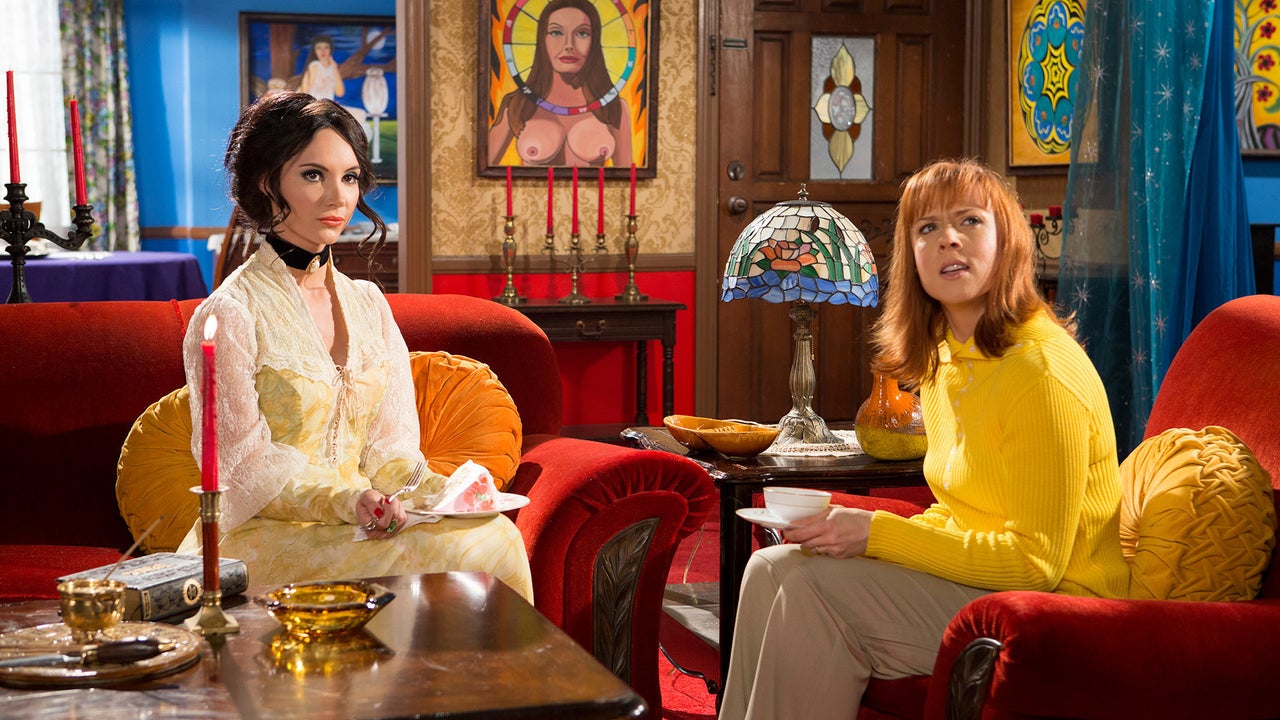
Although death is featured prominently in the film, every drop of blood and stretch of blue flesh is rendered with stunning care by Biller herself, who not only wrote and directed the film but handmade all the sets and costumes.
“It’s my choice to create an aesthetic, beautiful, fairy-tale world,” Biller said. When explaining her passion for fantastical aesthetics, rather than realistic renderings, Biller sounds a bit like the protagonist she created. Except instead of seducing men, she’s seducing her audience. “Film itself is kind of a sexual fantasy,” Biller said. “Cinema is a spell that is being cast over the audience, you want to keep them in a trance.”
There’s another layer to Biller’s obsession with aesthetic ― particularly, pastel eyeshadow, gloriously decorated vanity tables and lacy Victorian collars. “I very much think there is a female gaze in movies, not just a male gaze,” Biller said. “And I think it’s a narcissistic gaze. Looking at other women in films and wanting to emulate those women.”
Films used to, Biller explained, better cater to both the male and female gaze, providing means of visual stimulation that extended beyond sexual pleasure to simply sensual pleasure. Decadent fabrics, rhythmic movements, tropical colors, food you can almost taste through the screen. Today, however, Biller sees few films that cater to the traditional female gaze as successfully as, say, fashion magazines ― literature that appeals to the vain fantasies and imaginations of women.
“I love to have actresses looking in the mirror or trying on clothes [in my films],” Biller said. “But I have to have women also driving the action, not just looking pretty on the sidelines. There aren’t really any solid, fleshed out male characters in the film and that’s intentional. I don’t want this to be about a male hero. It’s about women: what they think about, what they want.”
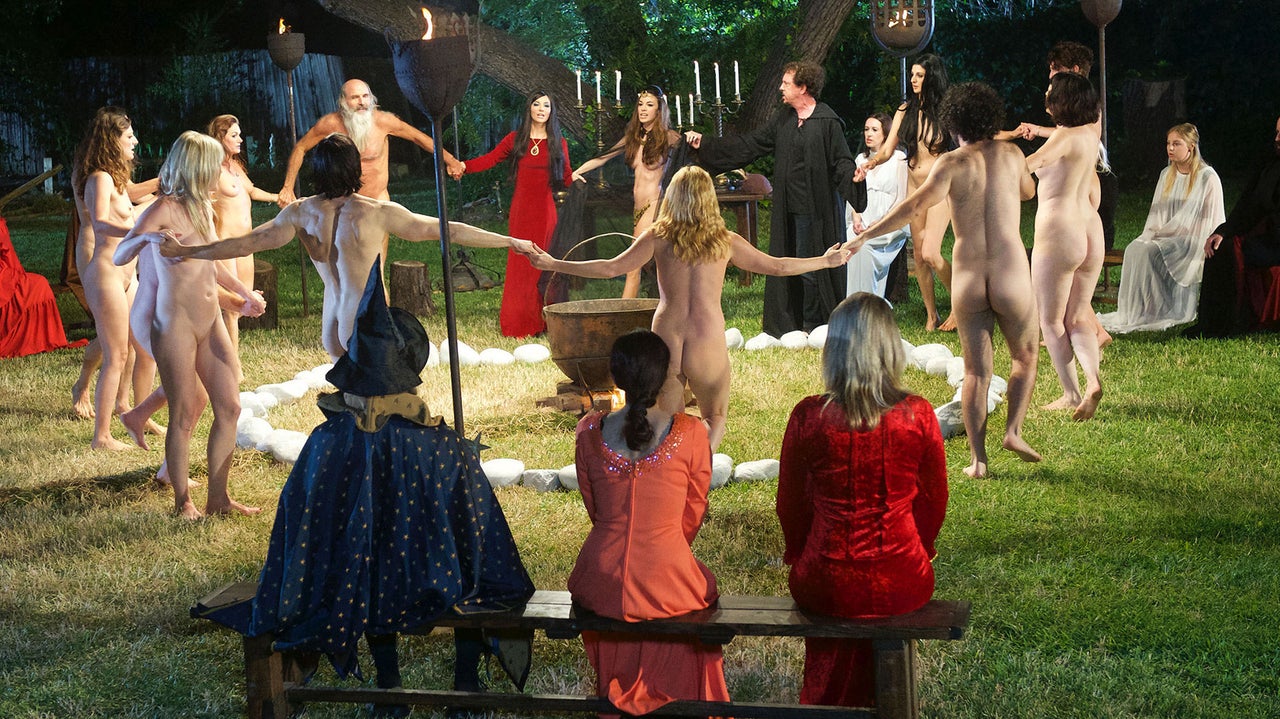
In that sense, Biller compares her film to a chick flick, though quite an unusual one. “The Love Witch” appeals to the fantasies and concerns of women, addressing issues of mental health, feminine power, and a disappointing hunt for love through the perspective of a powerful yet broken female lead.
And just as the film is no average chick flick, Elaine is no standard female role model. She’s obsessed with her appearance, manipulative, deceptive, and also a psychotic serial murderer. Yet viewers feel for Elaine when she fails to find the human connection she so hungrily craves. We root for her when she takes out a dud of a man who never saw her as anything more than a sex object. We worship her when she concocts potions with ease, applies lipstick with acumen, whips men into a frenzy with control and composure.
Elaine is no easy feminist heroine, and yet she embodies a simultaneous mixture of power and damage that many women can relate to. She is a clear product of the patriarchal culture we inhabit, where women’s outsides can be enhanced and refined while their insides, unnoticed, turn ugly and vindictive. After a lifetime of bending to the whims of men, Elaine finds her own power. And seeks revenge.
“Witch stories are so popular now,” Biller said. “Women are identifying as witches and finding power in that. [...] It’s a good metaphor for women and girls, a strong mythical figure to identify with in the absence of strong and fabulous role models for women.”
Purchase tickets to see “The Love Witch” at Los Angeles’ Nuart Theatre (with special Q&As on Friday, November 11, 2016, Saturday, November 12, 2016, and Sunday, November 13, 2016), San Francisco’s Opera Plaza Cinema (with special Q&A on Saturday, November 12, 2016) and San Francisco East Bay’s Shattuck Cinemas (with special Q&A on Sunday, November 13, 2016).
